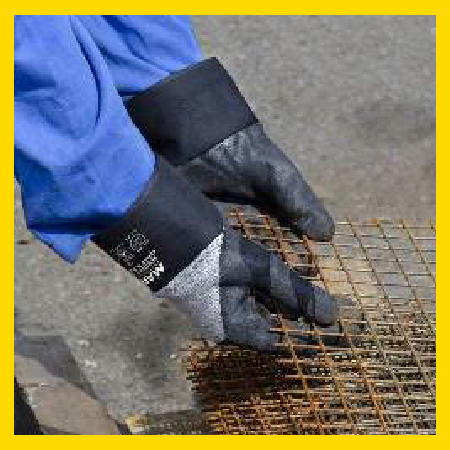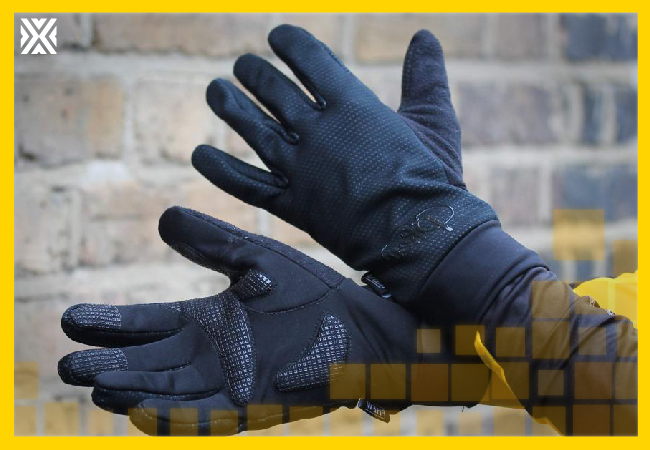Currency
December 05, 2018

Winter can be a real drag, especially if you don’t have adequate protection for your environment. Effective PPE is a must during this time of year, when outdoor weather conditions can limit your ability to work and use your hands uncovered. When looking for your next winter glove, here are a few things to keep in mind.

The typical winter glove will have two layers. The outer layer made of nylon or leather, and an inner layer, insulated to hold in warmth. Depending on your working conditions and the climate, you may also need a third layer, a waterproof liner — a separate piece that can be worn underneath your glove that will help keep your hands dry in snowy conditions.
The liner’s design, however, doesn’t allow sweat to leave the glove during extended use which, when coupled with heavy insulation, may prove problematic during a long work day.
Heat goes where it’s needed. In the winter, that means moving from warm areas (your hands, for example) to cold ones. Insulation slows this process down.
An insulated winter glove can keep hot air trapped inward, preventing it from escaping and keeping your hands warm. Having too much insulation, however, can cause overheating, discomfort and as already mentioned, it can be a breeding ground for excess sweat.
Removing the glove entirely will quickly put you at a much higher chance for contracting frostbite or hypothermia and a lighter glove may not be able to protect you against moisture.
To strike the right balance, make sure your glove is equipped with the most effective insulation. Here are a few suggestions.
Although still popular as a winter use material, cotton is only moderately successful as an insulator and is an excellent absorbent, being able to hold up to 25 times its weight in water alone.
This can make using cotton gloves in winter conditions particularly challenging, as they’ll be unable to be used in water or snow for extended periods of time, without losing their more elastic and dexterous properties.
Wool is incredibly breathable, which allows air to pass through it. As an insulator, this will help to protect you from overheating and unwanted moisture, while keeping warm air close to your hand. Like cotton, however, wool can prove problematic to the outdoor winter wearer.
Wool can hold close to 20 percent of its weight in water but once it passes that threshold, it can be difficult to maintain any of its much more beneficial properties. Once that happens, wool can lose up to a third of its strength.
A synthetic, specialty-designed fiber, Thinsulate™ can be tightly woven to keep heat in and your hands warm, or woven lighter and looser to allow for a cooler, more comfortable fit.
It also comes with its own specific rating system, helping you to better understand how exactly it works to keep you warm. This is measured in grams per square meter (GSM,) starting at 40 GSM and extending out all the way to 800 GSM. The higher the number, the more warmth your gloves can provide.
The best insulation for mild days: 80 to 100 grams of Thinsulate™ is perfect for the average winter day above 20°F (-6°C)
The best insulation for cold days: 100 to 200 grams will be best on cold days below 20°F.
The best insulation for extreme cold: In Arctic conditions, wear a glove with between 200 and 400 grams.
When winter arrives, you shouldn’t let the weather limit your safety practices or your working habits. Updating your PPE to reflect seasonal change and work conditions will help you perform at your best while keeping you safe… even if you’re in Antarctica.

Insulation 101
The typical winter glove will have two layers. The outer layer made of nylon or leather, and an inner layer, insulated to hold in warmth. Depending on your working conditions and the climate, you may also need a third layer, a waterproof liner — a separate piece that can be worn underneath your glove that will help keep your hands dry in snowy conditions.
The liner’s design, however, doesn’t allow sweat to leave the glove during extended use which, when coupled with heavy insulation, may prove problematic during a long work day.
Heat goes where it’s needed. In the winter, that means moving from warm areas (your hands, for example) to cold ones. Insulation slows this process down.
An insulated winter glove can keep hot air trapped inward, preventing it from escaping and keeping your hands warm. Having too much insulation, however, can cause overheating, discomfort and as already mentioned, it can be a breeding ground for excess sweat.
Removing the glove entirely will quickly put you at a much higher chance for contracting frostbite or hypothermia and a lighter glove may not be able to protect you against moisture.
To strike the right balance, make sure your glove is equipped with the most effective insulation. Here are a few suggestions.
Cotton flannel
Cotton production is still a staple of industry for countries around the world, being used to manufacture hundreds of everyday products, gloves included.
Although still popular as a winter use material, cotton is only moderately successful as an insulator and is an excellent absorbent, being able to hold up to 25 times its weight in water alone.
This can make using cotton gloves in winter conditions particularly challenging, as they’ll be unable to be used in water or snow for extended periods of time, without losing their more elastic and dexterous properties.
Wool
Wool is incredibly breathable, which allows air to pass through it. As an insulator, this will help to protect you from overheating and unwanted moisture, while keeping warm air close to your hand. Like cotton, however, wool can prove problematic to the outdoor winter wearer.
Wool can hold close to 20 percent of its weight in water but once it passes that threshold, it can be difficult to maintain any of its much more beneficial properties. Once that happens, wool can lose up to a third of its strength.
Thinsulate™
A synthetic, specialty-designed fiber, Thinsulate™ can be tightly woven to keep heat in and your hands warm, or woven lighter and looser to allow for a cooler, more comfortable fit.
It also comes with its own specific rating system, helping you to better understand how exactly it works to keep you warm. This is measured in grams per square meter (GSM,) starting at 40 GSM and extending out all the way to 800 GSM. The higher the number, the more warmth your gloves can provide.
When winter arrives, you shouldn’t let the weather limit your safety practices or your working habits. Updating your PPE to reflect seasonal change and work conditions will help you perform at your best while keeping you safe… even if you’re in Antarctica.









